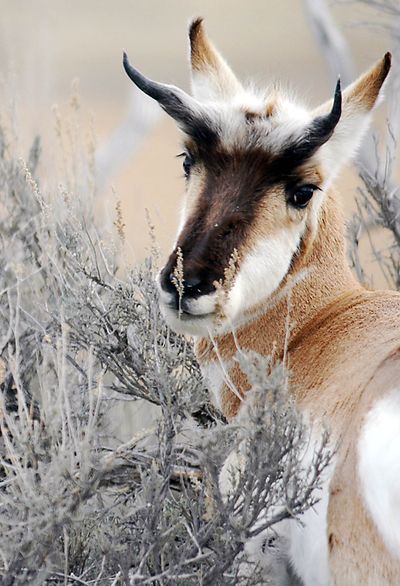Pronghorn’s return delayed
Washington hunters funding studies

Pronghorns one day could again roam swaths of Eastern Washington, although not as soon as longtime supporters of reintroduction have hoped.
Washington’s Department of Fish and Wildlife recently began developing an environmental impact statement on the feasibility of reintroducing the native species.
Pronghorns have been extirpated from the state since the mid-19th century. The department made four releases of transplanted pronghorns in the state from the 1930s to 1960s, but a population never was sustained.
The possible reintroduction of the species is included in the department’s new 2009-2015 game management plan, said Donny Martorello, manager of the carnivore, furbearer and special species division.
The agency was approached at least four years ago by Safari Club International, a wildlife conservation and hunting group, about the possibility of reintroducing pronghorns in Eastern Washington, said Joe Greenhaw of SCI’s Seattle-Puget Sound chapter.
The sportsmen’s group helped fund a habitat assessment study that found suitable areas for pronghorns in Eastern Washington. SCI officials say they also have put up thousands of dollars to pay for the environmental impact statement and set aside nearly $100,000 to help pay for the transplanting of pronghorns.
“We’ve been waiting on this for three years and it seems the hang-up is in Olympia,” Greenhaw said, noting that some club members are frustrated by the delays. “We should have been releasing pronghorns this year.”
A biologist Safari Club hired to scope potential release sites looked at about nine locations and found three on public land that were ideal, Greenhaw said. If the state ultimately approves reintroduction, he said 30 pronghorns a year could be released over three years at each of the three sites.
The most pronghorn-friendly area is from Vantage to the Army’s sprawling Yakima Training Center, in part because of its shrub steppe vegetation, Martorello said.
“It’s the best contiguous piece of habitat, and with the rolling hills, it’s perfect for them,” he said.
The environmental impact statement is expected to take at least a year to complete, Martorello said, and it will examine several critical questions, such as:
•How would pronghorns affect the greater ecosystem and other big-game species?
•How would they impact agriculture and grazing?
“We recognize that crop damage is the biggest single issue,” Martorello said. “If we can develop a mechanism for dealing with the crop damage issue in a fair way, that will be a major factor in the decision.”
Even if pronghorns are reintroduced, it would take time for them to reproduce in sufficient numbers to allow limited hunting.
“It’s hard to know if there will even be a sustainable population,” Greenhaw said.
The pronghorn, which is found throughout the western U.S., is the second-fastest land mammal in the world – the cheetah is the fastest – and can reach speeds of over 53 mph, according to National Geographic magazine’s Web site.
They are hunted on a limited basis in most Western states, including Montana, Idaho and Oregon.